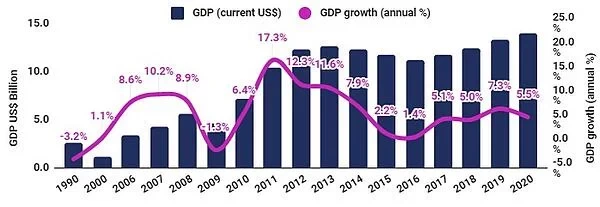The economy of Mongolia was once dependent on agriculture and livestock. However, today, the Mongolian economy is largely reliant on mining, which makes up 30% of the country's industrial output. Mongolia has extensive mineral deposits, including copper, coal, gold, molybdenum, tin, and tungsten. Another important industry is the production of cashmere. Mongolia is the world's second-largest producer of cashmere, with the main company, Gobi Cashmere, accounting for 21% of global cashmere production as of 2006.
Mongolian Economy during Socialism:
The Mongolian economy was heavily influenced by Soviet assistance, which, at its peak, accounted for one-third of the country's GDP. During the socialist era, Mongolia underwent significant cultural, scientific, and technological changes. Large-scale campaigns such as the Cultural Revolution, the Collective Movement, and the Atar Movement took place throughout the country, leading to drastic changes in the nation's population, culture, lifestyle, economic structure, and systems. In 1939, Choibalsan Khorloo became the leader. Under Soviet pressure, he confiscated private property. In the 1960s, relations between the USSR and China broke down, and Mongolia became increasingly aligned with the Soviet Union. As a result, Soviet influence in Mongolia grew, and the Mongolian economy experienced rapid growth during the 1960s. This period also marked Mongolia as the first country in Asia to achieve universal literacy.
Mongolia Economy after Democracy & Today:
After Mongolia transitioned to a market-oriented democracy in the early 1990s, the domestic private sector expanded significantly across key industries, including banking, real estate, telecommunications, and food and beverage. Foreign direct investment showed clear, though sporadic, growth. Mongolia joined the World Trade Organization (WTO) in 1997. By 2015, real GDP per capita more than doubled compared to 1990. Economic participation increased, with private investment rising from 12% of GDP in 1990 to over 25% in 2005, and even 40% by 2012. Access to banking services in Mongolia is among the highest in the world, and financing has expanded consistently. Mongolian economic growth and development have been impressive, with the highest GDP growth in the world in 2011 (over 17%), but the economy has also been highly volatile, with flat growth in 2016 and a historic $5.5 billion multilateral support package initiated in 2017.


